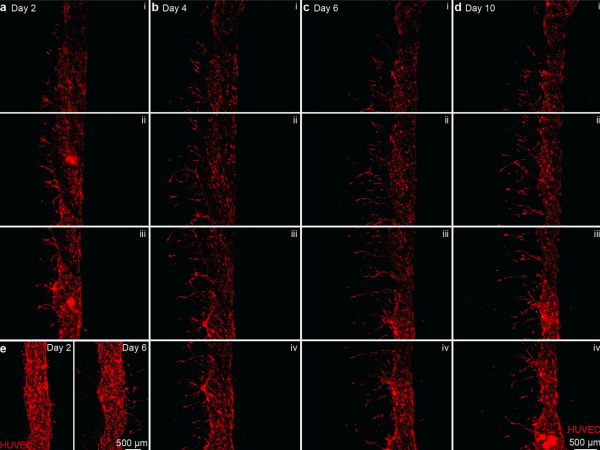University of Minnesota researchers have created a way to study cancer cells which may lead to improved treatment. The method involves a 3D in vitro model in which cells behave differently to when studied on a plastic or glass surface.
The researchers use 3D bioprinting techniques to build tumor constructs. The custom 3D printing technology enables the researchers to precisely place living cells, functional biomaterials, and programmable release capsules.
“One of the reasons this model is successful is that we are better able to control the environment,” explains Fanben Meng, Post-Doctoral Associate in the College of Science and Engineering at the University of Minnesota. “We are able to slowly cause the release of the chemical mediators and create a chemical gradient. It gives the cells time to behave in a way that’s similar to what we think happens in the body.”
As a result, the models create native tumor micro-environments which the researchers believe will improve how drugs and treatments translate to the human body as a 3D model is much more similar than a plastic surface.

Identifying Potential Cancer Drugs and Therapies
The benefit of the 3D in vitro models is that they will be used as a platform to find and test new drugs and therapies. The researchers will also be studying metastatic cells which enter a blood vessel and travel to another part of the body.
Daniel Vallera, Professor of Therapeutic Radiology-Radiation Oncology in the Department of Radiation Oncology at the University of Minnesota Medical School, said: “Testing anti-cancer drugs and cell therapies are both concepts that the University of Minnesota is world renowned for, and, with this model, we continue to be on the forefront of those innovations.”
The researchers have first been working on melanoma and lung cancer and will move onto incorporating further cell types, including immune system cells.
“Something like this can yield some very important answers between the relationship of vasculature and drugs because this is modular; you can add elements to it and make it more sophisticated. You can even use the patients’ own tumor cells in this model.”
Learn more about the researcher’s work by reading the paper published in Advanced Materials.
Source: Press Release

License: The text of "Researchers 3D Bio-Print in Vitro Model to Study Cancer Drugs and Treatments" by All3DP is licensed under a Creative Commons Attribution 4.0 International License.